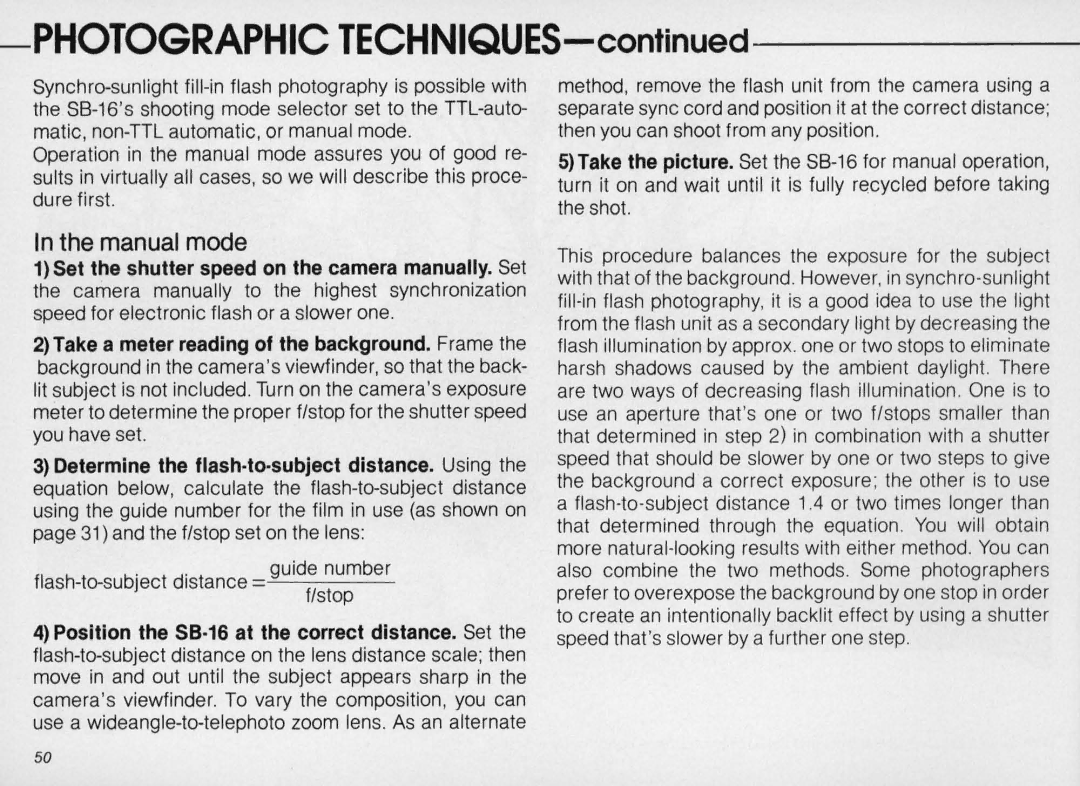Synchro-sunlight fill-in flash photography is possible with the S8-16'sshooting mode selector set to the TTL-auto- matic, non-TTL automatic, or manual mode.
Operation in the manual mode assures you of good re- sults in virtually all cases, so we will describe this proce- dure first.
In the manual mode
1)Set the shutter speed on the camera manually. Set the camera manually to the highest synchronization speed for electronic flash or a slower one.
2)Take a meter reading of the background. Frame the background in the camera'sviewfinder, so that the back- lit subject is not included. Turn on the camera'sexposure meter to determine the proper f/stop for the shutter speed you have set.
3)Determine the flash-to-subject distance. Using the equation below, calculate the flash-to-subject distance using the guide number for the fi lm in use (as shown on page 31) and the f/stop set on the lens:
.. | guide number |
flash-to-subJect distance | fIstop |
4)Position the 58·16 at the correct distance. Set the flash-to-subject distance on the lens distance scale; then move in and out until the subject appears sharp in the camera'sviewfinder. To vary the composition , you can use a wideangle-to-telephoto zoom lens. As an alternate
method, remove the flash unit from the camera using a separate sync cord and position it at the correct distance; then you can shoot from any position .
5)Take the picture. Set the S8-16 for manual operation, turn it on and wait until it is fully recycled before taking the shot.
This procedure balances the exposure for the subject with that of the background . However, in synchro -sunlight fill-in flash photography, it is a good idea to use the light from the flash unit as a secondary light by decreasing the flash illumination by approx. one or two stops to eliminate harsh shadows caused by the ambient daylight. There are two ways of decreasing flash illumination . One is to use an aperture that'sone or two flstops smaller than that determined in step 2) in combination with a shutter speed that should be slower by one or two steps to give the background a correct exposure ; the other is to use
aflash-to-subject distance 1.4 or two times longer than that determined through the equation . You will obtain more natural-looking results with either method. You can also combine the two methods. Some photographers prefer to overexpose the background by one stop in order to create an intentionally backlit effect by using a shutter speed that'sslower by a further one step.

